A revival of British
Sleeper Trains is coming to enjoy us.
by Alexander Naughton, editing by Earl of Cruise
by Alexander Naughton, editing by Earl of Cruise
Sleeper Trains epitomise
the romance of travel and have a magic touch and cosmopolitan spirit to them as
you go to sleep in one location and wake up refreshed in another. They are
convenient, cost effective and environmentally friendly ways to travel. These
lifeline trains allow people to make connections – for business, leisure and
family – in a way that no other mode of transport can. In recent years, sleeper
trains in Britain have experienced a great revival in their fortunes.
Photo: Travel poster of LMS Night Scot sleeper
train from London to Scotland
Photo: Travel poster of LNER Night Scotsman sleeper
train from London to Scotland
However this is in direct
contrast to what is happening with sleeper trains in Continental Europe where
they seem to be in decline due to the advent of low cost air travel,
development of high speed rail, lack of investment and promotion.
This article
looks at the background to sleeper trains in Britain and the factors that are
contributing to their revival in recent years including investment and
promotion.
BACKGROUND:
Sleeper trains have
operated in Britain since Victorian times and offered comfortable overnight
accommodation on long distance and some medium distance journeys, allowing
passengers to leave their home station in the early and late evening and arrive
at the destination at a civilised time the following morning. Often they
conveyed restaurant cars, so that dinner could be enjoyed before retiring and,
on longer journeys, breakfast in the morning. The earliest sleeper carriages
were introduced in Britain in 1873 by the North British Railway on the
Anglo-Scottish route between Glasgow and London Kings Cross. This and other
pioneering sleeping carriages in the UK, including the early Pullman sleeping
cars imported from the USA, had communal sleeping, with longitudinal berths
convertible from seats.
Photo: GWR First Class Sleeping Car No 9038 built
in 1897 at Swindon Works and used until 1931 on the London Paddington
to Fishguard Harbour sleeper trains. At Fishguard Harbour there were
connections with the ferry services to Ireland. This carriage now preserved at
West Somerset Railway.
The first sleeping car
train on the Great Western Railway was introduced at the end of 1877 from
London Paddington to Plymouth. This had 7 ft (2,134 mm) broad gauge carriages
with two dormitories, one with seven gentlemen’s berths and the other with four
ladies’ berths. These were replaced in 1881 by new carriages with six
individual compartments. An additional service was soon added from London to
Penzance which eventually became known as the forerunner of today’s Night
Riviera.
The Great
Western Railway introduced the familiar sleeping car layout with an internal
side corridor and compartments containing berths. This became the British
conventional sleeping car, introduced by a variety of railways. The main
sleeper trains services in Britain gradually became focussed on the following:
- London to Scotland
(Anglo-Scottish services)
- London and the West
Country (Devon and Cornwall)
- London and northern
cities.
- London to
Paris and Brussels (via train ferry) The Night Ferry
Flagship sleeper
services included the following titled trains:
- The Night Scotsman
(London Kings Cross to Edinburgh)
- The Aberdonian (London
Kings Cross to Aberdeen)
- The
Highlandman (London Kings Cross to Inverness and Fort William)
- The Night Scot (London
Euston to Glasgow)
- The Royal
Highlander (London Euston to Inverness)
- The Night
Riviera (London Paddington to Plymouth and Penzance)
- The Night
Ferry (London Victoria to Paris via Dover / Dunkerque train ferry)
In the interwar years a
large number of generally quite modern overnight sleeping carriages were
inherited by the Big Four railway companies. Yet from the 1920s a great deal of
new sleeper carriages were built by the Big Four. It can only be assumed that
the railways decided to build these new sleeper carriages in order to meet
increased competition from other modes of transport combined with a greater
customer expectation of what should be provided. Sleeping carriages are heavier
passenger for passenger, than ordinary stock and their capacity for revenue
generation is not as high per ton weight as a conventional day carriage. A
typical 12-wheel sleeping car of the interwar period would weigh 40 tons or
more yet only accommodate around 12 berths. Also sleeper carriages could only
be used once a day so would generate less revenue for the railway compared to
day carriages.
However the Big Four
railways were surprisingly lavish in the provisions made for sleeper trains
which at best were likely to be only marginally profitable and at worst a heavy
loss maker. But the reason for this is that they were convinced that passengers
will pay due regard to “on train” facilities and amenities when making the
fundamental decision whether to use the railways in the first place. So for
these reasons the railways continued to build new sleeping carriages. Sleeper
trains were always the type of vehicles which gave the railways publicity and
status, especially on their more celebrated train services and all of the Big
Four made significant steps forward during the interwar period in terms of
sleeper carriage design.
In regard to sleeper train
services there were really only two significant competitors in the Big Four
period and these were the LMS and LNER on the Anglo-Scottish routes. They both
became rather good at sleeping cars and set the trend for the first generation
British Rail sleeping cars in the 1950s.
The traditional British
sleeping car layout (side corridor giving access to a series of compartments with
berths) never varied during the whole Big Four period. Until 1928 when third
class sleeping cars were introduced, there were only first class sleeping cars.
In 1929 the LMS equipped their sleeping cars with a new type of ventilation
system known as the “Thermotank” apparatus. This was a fan driven air
circulation system, driven by a 250 watt electric motor fed from the 24-32 volt
carriage lighting circuit. This served each compartment through a “Punkah”
louvre from a roof level air duct installed below the corridor ceiling. It
could be arranged either to deliver fresh air or extract stale air from the
compartment, and the compartment louvre – which was under passenger control –
could also be swivelled to direct the air over a wide area. Its capacity was 40
cubic feet per minute per berth and the passenger could, if desired, close it
off completely. It proved a remarkably successful idea and became the basis of
the method which was designed into the later LMS and BR standard sleeping cars
right until the Mk III era in the 1980s.
Likewise, the LNER also
started to experiment in 1929 with “forced” ventilation of its sleeping cars.
It called it “Pressure Ventilation” and the system was developed by J. Stone
& Co rather than by Thermotank Ltd as on the LMS.
In one respect, however,
the LNER was more adventurous than the LMS: water heating. Here after
experiments involving keeping pre-heated water warm by using the train lighting
circuits, Sir Nigel Gresley, managed to install what amounted to a totally self-contained
water heating system in sleeping cars by fitting a supplementary belt-driven
generator and storage cells, fully independent of the lighting system. This
added weight but eliminated the need for the use of oil gas water heating. The
LNER was more keen than the LMS in ridding itself of oil gas for heating and
conducted considerable experiments in pursuance of this aim. Meantime, large
gas tanks for heating were always found under LMS carriages.
On the 24th
September 1928 the GWR, LMS and LNER simultaneously introduced proper sleeping
cars for third class passengers. As usual the LMS and LNER on their
Anglo-Scottish routes led the way in terms of concept and quantity and each
offered what amounted to an identical vehicle, an 8-wheeler on a 60ft frame,
the LNER examples being 61ft 6 in over body because of their bow ends. Within
these new carriages, layouts were identical: seven compartments to which access
was gained from end entrance lobbies, each of which also had access to lavatory
and toilet. In both cases compartments were 6ft 4in between partitions, neither
type had outside compartment doors and both of them featured two quarterlights
flanking a central frameless droplight on the compartment side, combined with
large picture windows on the corridor side. Within the compartments, a
convertible arrangement was offered with four berths at night, the upper ones
folding against the partition by day to produce a fairly orthodox side-corridor
third with eight seats per compartment. Pillows and rugs were provided for
night use at a modest supplement.
They were very handsome
vehicles and proved very popular. At the National Railway Museum is preserved a
fully restored LMS example from the very first batch. No.14241 was built by the
LMS at Derby Works and can be seen in the Station Hall.
Photo: LMS third class sleeping car No 14241 built
in 1920s at Derby Works.
Meanwhile the GWR offering
initially was three carriages but these did not display the innovation of the
LMS and LNER carriages. As a result in 1929 it built its own genuine third
class sleeping cars on the LMS / LNER pattern. There were only nine of these
new carriages but they were much more successful. They made full use of the
generous GWR loading gauge and were given bulging sides in order to lengthen
the berths slightly. They also had recessed end entrance doors, and in these
two respects they also set the pattern for the few first class sleeping cars
that the GWR built during the interwar period. Three further third class
sleepers with more restricted dimensions for cross country work were built in
1934.
In 1930 and 1931 the GWR
introduced the only first class sleeping cars built by the company between 1923
and 1947. Again there were only nine built in total and their appearance was
similar to the third class sleeping carriages from 1929.The only other sleeping
cars built to GWR design after its final trio of third class carriages in 1934
were four first class examples to a Hawksworth design in 1951 after
nationalisation. These were 10-berth 12-wheelers like their predecessors but
they were the first and only GWR design sleeping cars to have air conditioning
in any form – and even this was only pressure ventilation of the kind
introduced by the LMS and LNER more than 20 years previously. So this is a sad
reflection on Swindon and their lack of innovation in sleeping car design
compared to the LMS and LNER.
The LMS was the first to
put a properly modern interior into a vehicle whose exterior also indicated an
up-to-date approach to the subject. The instigator was William Stanier.
Interestingly, the first beneficiaries of this approach were the third class
travellers when in 1933 the LMS introduced what were undeniably some of the
most handsomely styled carriages ever to emerge in the modern flush sided look.
They used a new 65 ft underframe and their fixed berths and other internal
amenities echoed existing LNER practice, but for the first time ever in a third
class carriage, an attendant’s compartment was provided. Also by means of
outside air-scoops on the corridor side of the body, fresh air (passed through
oil filters) could enter the carriage and be admitted to compartments by floor
grills in the compartment doors.
The first of these fine
carriages was sent with the Royal Scot locomotive and train on its North
America Tour in 1933, where, largely in consequence of its overall quality
offered to ordinary passengers, it caused something of a sensation by contrast
with American “coach” class travel.
Finally in 1935, the
Stanier approach was applied to first class sleeping cars. The 12-wheel
12-berth style was retained but the body length was increased to 69 ft. The
cars also displayed a slightly bulging profile and this added some 3 ins to the
berth length. By some margin, these were the largest passenger carrying
vehicles ever built by the LMS, but were commendably light in weight. This was
achieved by means of a whole host of new constructional features which Stanier
had incorporated into their design. Most of the change was in the extensive use
of electric arc welding in the bogies, underframe and carriage roof frames. In
terms of their interior décor, the LMS made great use of Rexine and also four
different interior colours were used within each car (three compartments each
in yellow, green, blue and beige) with sanitary ware to match. However the
corridors faithfully maintained LMS traditions; walnut and sycamore. All of the
internal passenger facilities which had evolved after 1923 were also installed.
One of these first class sleeping cars went with the Coronation Scot train on
its North America Tour in 1939.
Soon afterwards the LMS
produced some composite sleeping cars to the new Stanier pattern. These two
were 69 ft vehicles and the only 12-wheel LMS pattern sleeping cars to be built
at Derby. This works had supplied all the LMS third class sleeping cars but
first class sleeping cars tended to be built at Wolverton. In these new
composite sleeping cars, the fixed berth compartments of the 1933 third class
type were combined with the single berths of the 1935 first class cars to
produce a predictable end product. Unlike the earlier composites, they were
arranged with first class at one end and third class at the other end.
By the beginning of the Second
World War both the LMS and LNER were producing high quality sleeping cars.
After the war the LNER moved to flush sided style and only built one further
sleeping car in its own name. This was a mildly experimental Thompson third
class car in 1947 which by means of an interlocking berth layout, enabled both
single and double compartments to be contrived. But in its anticipation of
providing fewer than four berths in a third class compartment, it probably had
some influence on the final designs which were to post-date the onset of BR.
Outwardly, this first Thompson sleeping car bore the most resemblance to the
LMS styling than any of its Gresley forebears. Apart from this one car, the
final LMS and LNER sleeping designs all came into service under BR after nationalisation.
The LMS ordered another
batch of Stanier style first class 12-wheelers (built 1950-51), which were
almost identical to the prewar series, and Thompson on the LNER produced what
amounted to a 10-berth equivalent on an 8-wheel chassis.
It was in the third class
(soon to be second class) where the ultimate fusion of ideas between LMS and
LNER took place. Here, in 1951-51, both Doncaster (LNER) and Derby (LMS) came
up with a new concept for overnight third class travel. Both used a 65ft chassis
and the layout was conventionally side-corridor, but all compartments in both
series were twin berth only and given first class type pressure heating and
ventilation. Their origins may have had something of Thomson’s influence in
them, but a further factor may have been the not uncommon practice during the
Second World War of adding upper berths to some first class compartments. Thus
both LMS and LNER designs played a considerable influence in future BR designs.
Photo: BR (LMS design) first class sleeping car No
M386M built in 1951 at Wolverton. A similar example is now preserved at the
Bluebell Railway.
After nationalisation in
the British Rail era there were two major investments in the sleeper fleet. The
first occurred between 1957 and 1964 when 380 Mark 1 carriages were built to
replace the fleets inherited from the GWR, LMS and LNER.
The Southern Railway didn’t
operate sleeper trains but did provide access to Compagnie International des
Wagon Lits (CIWL) for their Night Ferry service from London to Paris via the
Dover to Dunkerque train ferry. In 1977 operation of the Night Ferry sleeper
train was taken over from CIWL by British Rail (Southern Region) under an
agreement between BR, SNCF and SNCB. SNCF continued to be commercially
responsible for the train as it had been since 1971 and bought the Wagon-Lits
cars from CIWL. In January 1974 SNCF took over publicity of the Night Ferry
sleeper service from CIWL. This ceased on the 31 October 1980 with the final
departure of the Night Ferry sleeper from London, Paris and Brussels.
In 1966 British Rail
launched the InterCity brand for its long distance services. In the same year
the Motorail brand was launched for accompanied cars. These car carrying trains
had their origins in the Anglo-Scottish Car Carrier launched in 1955. These
services offered sleeper accommodation on a train which also carried the
passenger’s own cars. The services grew in popularity and a number of loading
facilities in London expanded to include Kings Cross, Holloway and Marylebone.
There were three kinds of car-carrying trains operated by British Rail. The
CAR-SLEEPER and the CAR-CARRIER service passenger and car travel by the same
train. With the CAR-TOURIST service passenger and car travel by separate
trains, the car travelling through the night and the passenger by day or night.
In the mid 1960s a dedicated station and specialised loading facility was
needed to serve the London area and this was created at Kensington Olympia. On
24 May 1966 the car carrying trains were relaunched as the Motorail
network. This was a great success story for British Rail and in the 1970s with
frustration about long distance car travel and high petrol prices the services
were well patronised for over a decade.
In 1969 the decision was
made to market all of Britain’s sleeper trains as InterCity Sleepers. From its
birth in 1966 the InterCity concept quickly caught the public imagination in
Britain and started a path that would place it among the world leaders in
provision of quality long distance rail transport in the following decades.
Photo: Caledonian Sleeper hauled by class 92
In 1973 British Rail
created Travellers Fare to undertake all its onboard catering. For a while it
was linked with British Transport Hotels, but when these were privatised in the
1980s, Travellers Fare moved to become a division under the control of British Rail.
It provided station facilities and on board catering. In June 1986, Intercity
took over the onboard catering for its services as InterCity Catering Services.
In December 1986 Travellers Fare was privatised.
The second major build of
new sleeping cars under British Rail came about in the early 1980s when 208 air
conditioned Mark III vehicles were built at Derby.
During this
period the list of sleeper trains operated was still very extensive despite
some minor withdrawal of services in the 1960s and 70s including the end of the
Friday night sleeper service from London to Oban. This had been attached to the
19:15 sleeping car train from London Euston to Perth and detached at Stirling.
It returned to London on the 1715 train from Oban to Glasgow and Edinburgh on
Sunday afternoons. In the early 1960s there were also sleeper trains between
London Paddington and Birkenhead, Manchester to Plymouth, and the extension of
the Barrow sleeper to Whitehaven. These had all disappeared by 1975.
By 1975 the BR sleeper
train services included the following:
- London Kings Cross to
Leeds
- London Kings Cross to
Newcastle
- London Kings
Cross to Edinburgh, Fort William and Aberdeen.
- London Euston to
Liverpool
- London Euston to
Manchester
- London Euston to Holyhead
- London Euston to Preston
and Barrow
- London Euston to Carlisle
and Stranraer
- London Euston
to Glasgow and Inverness
- London Paddington to
Milford Haven
- London Paddington
to Exeter, Plymouth and Penzance
- London
Victoria to Paris and Brussels (The Night Ferry)
- Bristol to Glasgow and
Edinburgh
- Nottingham to
Glasgow
In addition to these,
sleepers were provided on a number of Motorail services, many of which were
seasonal. In the late 1970s British Rail talked about a major investment in the
sleeping car fleet including options for 75 ft long air conditioned vehicles
with improved standards of ride, sound insulation, décor and amenities
generally. It was felt that they should be “travelling hotels” with the
provision of a bar / refreshment area in each set of three coaches with
continental breakfast facilities in all compartments. These aspirations were
admirable for the time but were overtaken by major changes in the market for
medium and long distance travel and increasing customer expectations for
overnight accommodations.
In building the new Mark
III sleeper carriages without ensuite facilities, this proved to be a major
mistake by British Rail which continues to hinder the Caledonian Sleeper and
Night Riviera sleeper services today. As a result the market for sleeper
services declined in the 1980s and 90s. Other important factors that affected
the market for sleeper services in this period included the introduction of low
cost domestic flights from a number of regional airports which particularly
affected the Anglo-Irish traffic via the ferry services. This lead to the
closure of the sleeper services from London to Stranraer, Holyhead and
Fishguard. Also significant modernisation and electrification enabled major
journey time reductions on key routes including London to Liverpool,
Manchester, Leeds, Preston, Carlisle, Newcastle and South Wales.
In 1982 InterCity sector of
British Rail was restructured into a series of route units. The Anglo-Scottish sleeper
services were placed in under West Coast and the London to the West Country sleeper
services were under Great Western.
On 11 July 1983 the London
to Penzance sleeper was relaunched as the Night Riviera, designed to complement
the long-established daytime Cornish Riviera.
On 6 May 1987 InterCity
Sleepers was relaunched with Lounge Cars and Sleeper Check In. By this time the
sleeper services were focussed on the Anglo-Scottish services and the
Paddington to Penzance service.
Instead of two competing
Anglo-Scottish services via the WCML and ECML it was combined into a single
service operating out of London Euston with just two 16-car trains each night,
the first to Aberdeen, Inverness and Fort William, and the second to Glasgow
and Edinburgh. Lounge cars were introduced serving simple cooked meals and
light refreshments. Loss of sleeper services from the ECML caused much public
protest as did the loss of the sleeper to Stranraer Harbour.
In 1992 Sleeper and
Motorail services were combined to for InterCity Overnight Services business
unit. By1992 InterCity reached the height of its success and became an
integrated business within British Rail.
On 5 March 1995,
responsibility for operation of the Anglo-Scottish services passed within
British Rail from InterCity West Coast to ScotRail. On 4 June 1996, the service
was relaunched as the Caledonian Sleeper with the Night Caledonian (to
Glasgow), Night Scotsman (to Edinburgh), Night Aberdonian (to Aberdeen), Royal
Highlander (to Inverness) and West Highlander (to Fort William) sub-brands.
But in 1992 the Government
announced plans to privatise the railways in 1994. An early suggestion was to
retain or privatise InterCity as its own train company. InterCity was one of
the best known brands in Britain, with an 82% brand awareness which had taken
25 years to develop. It was a well defined business with a highly successful
track record in profit, performance, marking and quality delivery.
Sadly the Government
decided to split the railways on a route basis and this resulted in the break
up of InterCity as a business and as a brand. Ownership of the InterCity brand
name transferred to the Department of Transport who continue to own it today.
On 31 March 1994 InterCity closes as a corporate business within British Rail
with a final profit of £100 million. On the 28 May 1994 Motorail services were
withdrawn. On the 31 March 1997 British Rail operates its final train which was
the sleeper service from Glasgow to London Euston. It was the end of an era as
British Rail ceased.
Privatisation in the mid
1990s (1993-1997) also presented another major challenge for overnight sleeper
services and resulted in the loss of the Bristol to Glasgow / Edinburgh
service. The Caledonian Sleeper was placed within the Scotrail franchise and
the Night Riviera was part of the Great Western franchise. Yet none of these
offer ensuite facilities in the compartments due to the legacy of Mark III
carriages.
Thus the sleeper
train services evolved into the two routes we see today:
- The Caledonian Sleeper
(London to Glasgow, Edinburgh, Aberdeen, Inverness and Fort
William)
- The Night
Riviera (London Paddington to Penzance)
In 2015 the
Scottish Government decided to separate the Caledonian Sleeper from the
Scotrail franchise and placed it in its own dedicated franchise. This was
awarded to Serco in 2015 and they have placed a £100 million order for 75 brand
new carriages due to be delivered in 2018. These new cars will include business
berths with ensuite toilets and showers and they will be built by CAF.
Meanwhile the Night Riviera sleeper continues to thrive in the Great Western
franchise and this will be extensively refurbished by 2018. So the sleepers are
going from strength to strength.
The
Night Ferry – Britain’s Only International Sleeper:
In 1876, Georges
Nagelmackers, founded the Compagnie International des Wagon Lits (CIWL) in 1876
to operate sleeping car and Pullman services in Europe. He had been inspired by
the Pullman operations of George Mortimer Pullman in America and had the vision
to create an international company operating luxurious trains on well planned routes
across Europe across national frontiers. This was a revolutionary concept for
that time. It was accompanied by a network of hotels at strategically important
places across this network.
In 1894 the Compagnie
Internationale des Grands Hotels was founded as a subsidiary and began
operating a chain of luxury hotels in major cities. Among these were the Hôtel
Terminus in Bordeaux and Marseille, the Hôtel Pera Palace and the Bosphorus
Summer Palace Hotel in Istanbul, the Hôtel de la Plage in Ostend, and the Grand
Hôtel des Wagons-Lits in Beijing
Soon his company had
created a comprehensive network of overnight sleeper services and daytime
Pullman trains across the European Continent. Among these were famous overnight
services such as the Orient Express, the Nord Express, the Sud Express, the
Train Bleu, the Rome Express, etc.
Prior to the First World
War, CIWL held a monopoly being the only group catering to the needs of the
international railroad traveller. Indeed they even expanded to markets outside
Europe with involvement in the Trans-Siberian Railway across Russia. The
Company's trains also reached Manchuria (Trans-Manchurian Express), China
(Peking, Shanghai, and Nanking) and Cairo.
These trains had the
distinctive deep blue livery and golden brass lettering of the CIWL. The
transcontinental services of Wagon-Lits became legendary and synonymous with
comfort, convenience, elegance, allure and above all the safety and privacy of
international overnight rail travel. In the 1930s the Great European Expresses
of Wagon Lits were the accepted ways of European travel. From Calais, sleeper
trains departed every night for Istanbul, Berlin, Rome, Trieste, San Remo,
Monte Carlo, Cannes, Nice and Bucharest. CIWL became the first and most
important modern multinational dedicated to transport, travel agency and
hospitality with activities spreading from Europe to Asia and Africa.
In 1936 CIWL working with
the Southern Railway inaugurated the Night Ferry sleeper service from London to
Paris via the Dover to Dunkirk train ferry. 20 sleeping cars were specially
built by Wagon-Lits so that they could be transferred across the English
Channel on board specially built train ferries. It became Britain’s only
through train service from London to Paris and enjoyed great success. For the
first time the legendary service of CIWL was extended beyond Continental Europe
to Britain. For many years the service was frequented by famous people
including Queen Elizabeth II, the Duke of Windsor, Sir Winston Churchill,
filmstars and government officials.
In 1939 the
Night Ferry service was suspended for the duration of the Second World War,
afterwards it resumed in both directions from 15 Dec 1947. In 1977 operation of
the Night Ferry sleeper train was taken over from CIWL by British Rail
(Southern Region) under an agreement between BR, SNCF and SNCB. SNCF continued
to be commercially responsible for the train as it had been since 1971 and
bought the Wagon-Lits cars from CIWL. In January 1974 SNCF took over publicity
of the Night Ferry sleeper service from CIWL. This ceased on the 31 October
1980 with the final departure of the Night Ferry sleeper from London, Paris and
Brussels.
Nightstar
– Britain’s stillborn International Sleepers via the Channel Tunnel:
In the 1970s
when British Rail was giving initial considerations to the Channel Tunnel
project a number of initial ideas regarding possible sleeper routes were
mentioned. These possible international sleeper routes could have included:
- London to Lille, Brussels
and Amsterdam
- London to Lille,
Brussels, Cologne and Hamburg
- London to
Lille, Brussels, Cologne and Frankfurt
- London to Lille,
Strasbourg, Munich and Salzburg
- London to Lille,
Strasbourg, Munich and Innsbruck
- London to Lille, Strasbourg
and Chur
- London to
Lille, Strasbourg and Interlaken
- London to Paris, Lausanne
and Milan
- London to Paris, Lyons,
Marseilles and Nice
- London to Paris,
Toulouse, Port Bou, Barcelona and Madrid
- London to
Paris, Bordeaux, Irun and Madrid / Lisbon
Later in the late 1980s and
early 1990s as the Channel Tunnel project became more established further
consideration of international sleeper services was explored. The Nightstar sleeper trains were proposed
overnight sleeper services from various parts of United Kingdom to continental
Europe, via the Channel Tunnel. To run alongside the Eurostar and north of London day-time Regional Eurostar services, the Nightstar was the last part in a
round-the-clock passenger train utilisation of the Channel Tunnel.
Unfortunately due to concerns about viability, the Nightstar sleeper proposal
was discontinued in 1997 despite carriages having been built for it. Some of
the cars built for the service were sold to VIA Rail in Canada.
The cars were
air-conditioned with power operated doors and designed to meet the safety
standards of each country they would run through, the most stringent of these
requirements being for the Channel Tunnel. A fleet of 139 cars were originally
ordered, broken down as 47 seated cars, 72 sleeper cars and 20 service
vehicles. The cars would have normally been configured as 9 seven-car and 9
eight-car sub-sets, with four spares (two seated cars and two service
vehicles). The trains would have run as either individual sub-sets (for beyond
London services and to some European destinations), or as two sets coupled
together (from London and through the Tunnel). As the trains were designed to
run as fixed formation sub-sets, only the two outer ends of each sub-set had
buffers and draw gear.
Photos - top and below: The carriages of the ill-fated Nightstar
Sleepers via Channel Tunnel
Seven-car sub-sets, for
services beyond London:
- Three seated cars
- Service vehicle
- Three sleeper
cars
Eight-car sub-sets, for
London services:
- Two seated cars
- Service vehicle
- Five sleeper
cars
Each seated car
had 50 reclining seats in a 2+1 configuration across the aisle, with room for
luggage underneath. Each sleeper car had 20 beds, split over 10 cabins (two per
cabin). All cabins had an en-suite toilet and basinette, while six cabins had
an en-suite shower. The beds could be folded into the wall to provide seating.
The service vehicle had bench style seating for 15 passengers in a lounge area,
a catering area, large luggage area and staff accommodation in the centre, and
a large cabin with two beds, designed to be accessible to wheel chair users, at
the other end. The seated area would have been coupled to the seated cars and
the cabin end to the sleeper cars. When the service was first proposed in 1992
route options were:
- London to Brussels and
Amsterdam / Cologne (splits at Aachen)
- London to
Brussels and Dortmund / Frankfurt (splits at Aachen)
- Plymouth to Brussels
- Swansea and Cardiff to
Brussels
- Glasgow to
Brussels
The Plymouth and Swansea
trains would each have been formed of a single seven-car sub-set, and the
Glasgow train of two seven-car sub-sets. The Plymouth and Swansea trains would
be diesel hauled beyond London by a class 37/6 and Generator set, with the
Glasgow train electric hauled. At London Kensington Olympia, the Glasgow train
would be split and the two sub-sets attached to the respective Swansea and
Plymouth trains to form one train to Paris and one to Brussels. They would be
electric hauled from London to the continent.
Eventually the final route
options included trains on five routes to Glasgow, London, Manchester
Piccadilly, Plymouth and Swansea in the UK to and from Amsterdam, Dortmund and
Frankfurt. Sadly these aspirations were not to be and the Nightstar project was
stopped in 1997 along with the Regional Eurostar proposals. So only the
Eurostar aspect was realised from the original concept of the Channel Tunnel
trains.
The carriages intended for
the Nightstar project were sold to VIA Rail in Canada.
Future
Opportunities for International Sleepers from London:
Despite the end of the
Night Ferry service in 1980 and the failure of the Nightstar concept in the
1990s in the future there may be opportunities to re-examine the potential for
international sleepers from London via the Channel Tunnel subject to the
outcome of BREXIT and the regulations that govern the Channel Tunnel.
But if such opportunities
are to be realised route destinations, timings, pricing and onboard amenities
for such services have to be carefully considered. Also it is absolutely vital
that such services are heavily promoted and marketed.
It should focus on major
holiday destinations (French Riviera and the Alps) and city destinations to
maximise the potential to capture business and leisure travellers.
Destinations
from London that could be explored may include:
- The French Riviera
(Marseilles, Cannes, Monte Carlo and Nice)
- The Ski Resorts of the
Alps
- Barcelona and Madrid
- Madrid and Lisbon
- Milan and Rome
- Hamburg and Berlin
- Copenhagen,
Oslo and Stockholm
So with the
right product, routes and adequate marketing there may be potential to make
such overnight sleeper services from London to Continental Europe a success.
BRITAIN’S
SLEEPERS TODAY:
The
Night Riviera (London Paddington to Penzance):
https://www.youtube.com/watch?v=RypBSOouz3s (promotional
film for refurbished Night Riviera sleeper service by Great Western Railway
from 2018)
Photo: The Night Riviera sleeper at London
Paddington
The Night Riviera sleeper
is operated by Great Western Railway and usually comprises four or five sleeper
coaches (but up to six at peak times), a restaurant car and two day coaches. It
usually is ready waiting in Platform 1 at London Paddington by 2100 with
passengers able to board at around 2230. Sleeper passengers are able to access
the First Class Lounge at Paddington while waiting for the train. Today the
Night Riviera sleeper is very popular and is often fully booked especially in
summer.
The service on the Night
Riviera differs from the Caledonian Sleeper. Its much later departure time
allows passengers to get an evening meal in London so there is less focus on
serving food (although with the brasserie lounge car on the refurbished trains
this is set to change). It is more of a drinks and light refreshments service
with all berth passengers offered a drink and a light breakfast in the morning
rather than an optional paid for breakfast. The refurbished train in 2018 is
set to transform its appeal. Indeed with the service often fully booked, it is
thought that there could be enough demand to justify a second service
especially in peak summer months.
The Night
Riviera is the only way of reaching London from Cornwall before 0900, doing a
full day’s business and then returning home in comfort. For a region where
incomes are far below the national average and house prices are high, this
ability for businesses to punch above their weight in London is vital.
Therefore the Night Riviera’s role in creating and sustaining jobs in Cornwall
is out of all proportion to the number of passengers it carries. Indeed it
makes a profit and is going from strength to strength. Even though the distance
covered is small compared with some sleeper services in Continental Europe,
daytime journey times between London and Cornwall remain long. So the Night
Riviera is a genuine lifeline service.
The
Caledonian Sleeper (London to Scotland):
https://www.youtube.com/watch?v=gJm5glAiU58 (Launch of the
new dedicated Caledonian Sleeper franchise operated by Serco in March 2015)
Photo: The Caledonian Sleeper at Fort William
The Caledonian Sleeper is
operated as a dedicated franchise by Serco and it is very popular due to the
vast distances from the Scottish Highlands to London. The Edinburgh and Glasgow
portions are very busy despite the good rail and air links from these cities to
London. The Highlands portion are also very busy especially in the peak summer
season when they can get fully booked.
Since creation of the
dedicated franchise in April 2015 by the Scottish Government and its awarding
to Serco the Caledonian Sleeper is enjoying a great revival. Massive investment
is going into its promotion and new rolling stock. A concerted effort has also
been made to maximise its Scottish credentials, improving catering provision
and allowing bookings 12 months in advance. The new trains coming into service
in 2018 will offer a wider range of accommodations and potentially increase
capacity. They also will be a world away from today’s BR era Mark III
carriages. However caution will be required to ensure that the new service
meets modern day expectations but yet remains cost effective and affordable to
its market.
The train is operated in
two services both of which are 16 carriages long. The first is the Lowland
Sleeper serving Glasgow and Edinburgh. The second is the Highland Sleeper
serving Edinburgh and then splitting into three sections to serve Aberdeen,
Inverness and Fort William. It is the longest scheduled domestic passenger
train in Britain and currently uses London Euston.
The Caledonian Sleeper is
also vitally important for the Scottish Highlands and enables businesses to
punch above their weight in London. So its role in creating and sustaining jobs
in the Scottish Highlands is out of all proportion to the number of passengers
carried by the Caledonian Sleeper. Even though the distance covered is small
compared with some sleeper services in Continental Europe, daytime journey
times between London and Scotland remain long particularly to the Scottish
Highlands. So the Caledonian Sleeper is a genuine lifeline service.
The service is going from
strength to strength due to a combination of growing dissatisfaction with the
airlines and increased awareness of the train due to increased investment and
promotion. Having its own dedicated franchise was a great help in raising the
awareness of the Caledonian Sleeper. The investment in new trains will also
significantly upgrade the onboard service offer. Also increasingly people want to
make sleeper trains part of their holiday experience so it is increasingly
important to work with tourism bodies to promote the region served. The sleeper
train can, if given the right investment and promotion, become an icon and
symbol of the region served and indeed a holiday experience in their own right.
Indeed Lonely Planet's 2016
Best in Travel guide rates Serco's London-Fort William Caledonian Sleeper
service the world's best sleeper route.
Serco’s plans are well
underway to transform the iconic Caledonian Sleeper service into an outstanding
hospitality service that is emblematic of the best of Scotland. Work to build
75-new coaches for the Caledonian Sleeper will soon get underway after Serco
agreed signed key contracts to manufacture 75 new Sleeper coaches. Serco signed
contracts with Construcciones y Auxiliar de Ferrocarriles (CAF) for the
manufacturing of the new fleet and Alstom UK for maintenance of the coaches.
The new coaches to be
delivered in 2018 will offer four innovative ways to travel in comfort on the
Sleeper service; Cradle Seats, Pod Flatbeds, Berths and En-Suite Berths, and
will include a Brasserie style Club Car for dining. Edinburgh-based designer
Ian Smith is responsible for creating a ‘contemporary’ style for the new
coaches. The Cradle Seats will provide an improved seated experience with
reclining seats and footrests. The Pod Flatbeds will fully recline from a seat
into a bed and offer a privacy screen and a reading light. The Berths ensure
privacy and personal security as well as all the facilities the modern
traveller needs. The En-Suite Berths are also available and provide en-suite
toilet and shower facilities.
The new Caledonian Sleeper
service with its new CAF sleeper cars from 2018 will provide a great
alternative to other rail and air travel between London and Scotland. After a
relaxing night on board the service, sleeping while on the move, guests will
arrive at their destination first thing in the morning refreshed and ready to
go.
Other plans to transform
the Caledonian Sleeper service into an outstanding hospitality offering that is
emblematic of the best of Scotland are well underway. This includes all aspects
of the operation of the Caledonian Sleeper franchise; marketing, sales,
hospitality service on the trains, vehicle maintenance and the provision of
facilities at stations for guests. So it is enjoying a great revival.
In the future there may be
scope to expand capacity on the Fort William and Inverness portions of the
Caledonian Sleeper during the summer season. Then as demand increases there may
be a case for additional rolling stock. Additionally there may be options to
explore to serve more destinations in Scotland such as Oban, Wick or Thurso for
example. As the core route from London to Scotland becomes full then there may
be scope to grow the service and add an additional route to the Midlands and
South West, after all the airlines do well on these routes so clearly there is
a potential market there to explore for the Caledonian Sleeper.
Lastly with the
construction of HS2 due to bring disruption to London Euston, the Caledonian
Sleeper is actively considering relocating the service to London Kings Cross.
This station will also be more fitting environment for this iconic service.
However the platforms cannot accommodate 16 car trains so the service may have
to be split into three portions in future instead (two 12-car trains and one 8
car train).
LESSONS
FOR THE FUTURE:
As I have said
in this article Britain’s sleeper services are going from strength to strength
due to a combination of growing dissatisfaction with the airlines and increased
awareness of the trains due to increased investment and promotion. Also
increasingly people want to make sleeper trains part of their holiday
experience so it is increasingly important to work with tourism bodies to
promote the region served. The sleeper train can, if given the right investment
and promotion, become an icon and symbol of the region served and indeed a
holiday experience in their own right.
So there are
some key factors for success including:
- Targeted and focused routes with convenient timings and
ticketing offer that perform a
lifeline role for their regions to link them
with major cities or capitals.
- Investment to keep pace with customer expectations and remain
competitive including
high quality vehicles, hospitality and
onboard offer
- Marketing and promotion of the service to make it a symbol of the
regions served and a
holiday experience in its own right.
Perhaps this success in
Britain can be an inspiration to reinvigorate overnight sleeper services
elsewhere across Europe where they are neglected and declining.
LINKS:
The Caledonian Sleeper
The Night Riviera


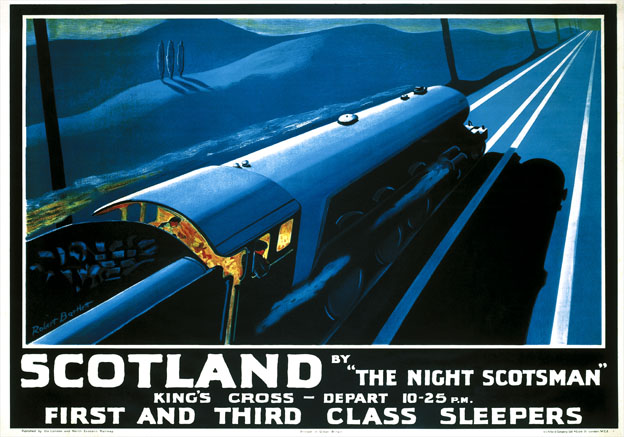
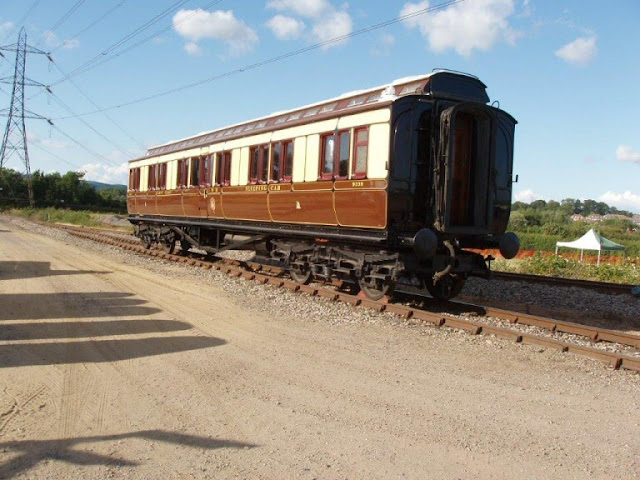
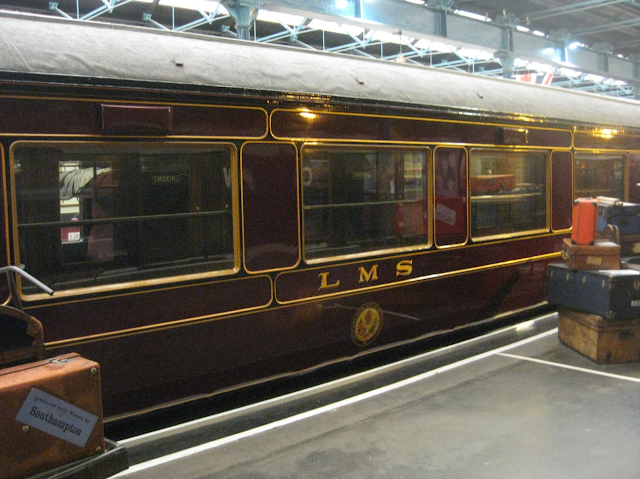
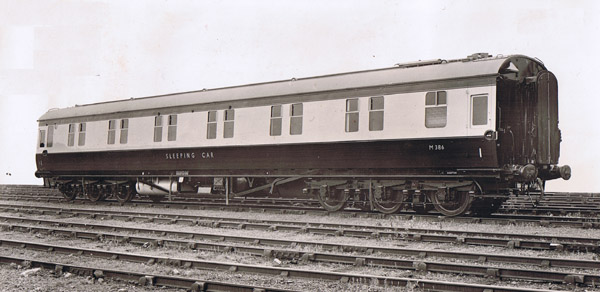

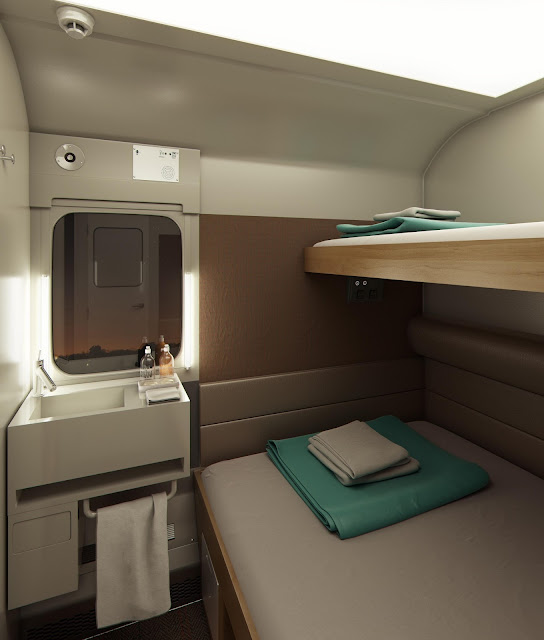
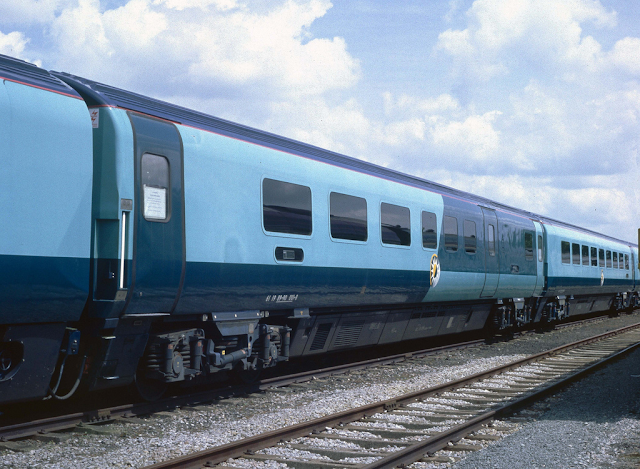
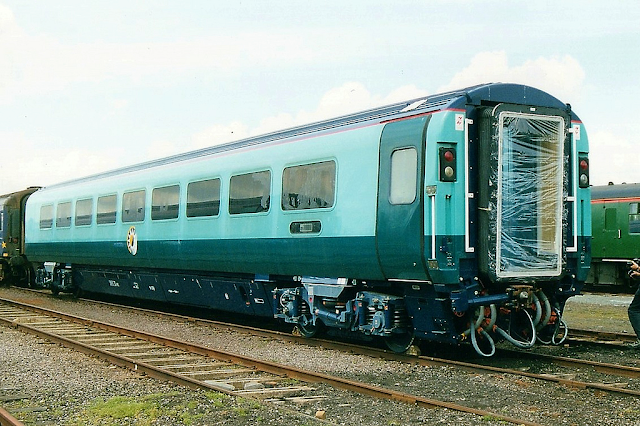
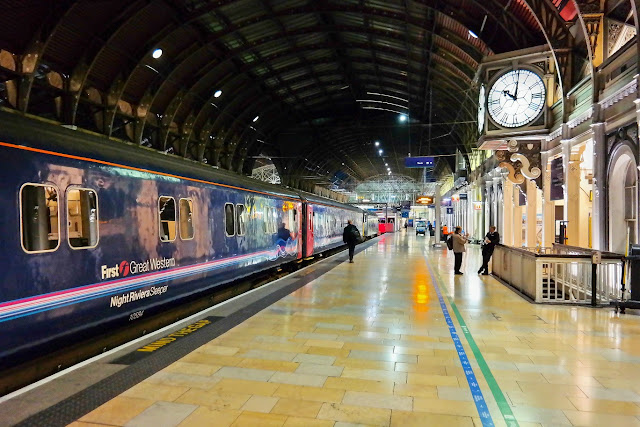

Nice article with good Insights. thank you for sharing.
ReplyDelete